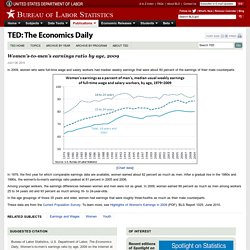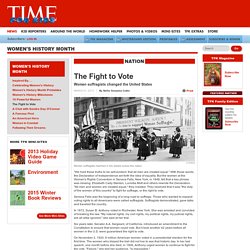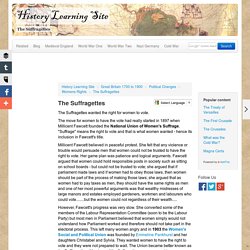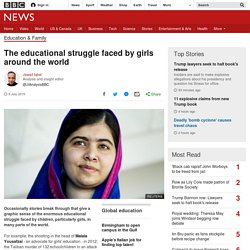

Indian worker left to die on Nokia assembly line. By Arun Kumar 9 November 2010 On October 31, a young female worker was left to die on the assembly line at the Nokia factory in southern India after her head and neck got trapped and crushed inside a robotic loading machine.

The horrifying incident exposed conditions that prevail in most of the country’s factories, where human life and limb are subordinated to the drive to reap profits off of cheap labor. Nokia, the world’s largest manufacturer of mobile telephones, employs around 7,000 workers at its Sriperumbudur plant, 40 kilometers from Chennai, the capital of the southern Indian state of Tamil Nadu. Seventy percent of the workers are female. Based in Finland, Nokia has over 123,000 employees in 120 countries, sales in more than 150 countries, global annual revenue of €41 billion and operating profit of €1.2 billion as of 2009. Ambika, the worker killed in the incident, was 22 years old. Michelle Obama Speaks on How She's Overcome Sexism YouTube (480p) WEF GenderGap Report 2010. Women's Rights. Women’s-to-men’s earnings ratio by age, 2009 : The Economics Daily : U.S. Bureau of Labor Statistics. Women’s-to-men’s earnings ratio by age, 2009 July 08, 2010 In 2009, women who were full-time wage and salary workers had median weekly earnings that were about 80 percent of the earnings of their male counterparts.

In 1979, the first year for which comparable earnings data are available, women earned about 62 percent as much as men. After a gradual rise in the 1980s and 1990s, the women's-to-men's earnings ratio peaked at 81 percent in 2005 and 2006. Among younger workers, the earnings differences between women and men were not as great. In the age groupings of those 35 years and older, women had earnings that were roughly three-fourths as much as their male counterparts.
These data are from the Current Population Survey. Women's rights country by country - interactive. Facts about women's rights. Violence against women and girls Violence against women and girls is a global issue with 1 in 3 women across the world experiencing violence.

(London School of Hygiene & Tropical Medicine, 2013) Statistics show that the abuser is usually someone the woman knows: 38% of all murdered women are killed by their partner. (London School of Hygiene & Tropical Medicine, 2013) Of all women killed globally in 2012, it is estimated that almost half were killed by a partner or relative compared to less than 6% of men (United Nations Office on Drugs and Crime, 2014) In a 2012 study 92% of women reported experiencing some form of sexual violence in public spaces in their lifetime. 88% reported experiencing some form of verbal sexual harassment. Over 700 million women alive today were married when they were under 18, and of those some 250 million were married before they were 15. Around 1 in 10 (120 million) girls worldwide have experienced sexual violence at some point in their lives. Women’s Suffrage campaign. WR wordcloud. Support exposés. Women's rights Flashcards. Untitled. Higher Bitesize History - Why women got the vote : Revision.
Higher Bitesize History - Women's suffrage movement : Revision. Women's Suffrage. The Fight to Vote. "We hold these truths to be self-evident: that all men are created equal.

" With those words, the Declaration of Independence set forth the idea of equality. But the women at the Woman's Rights Convention in Seneca Falls, New York, in 1848, felt that a key phrase was missing. Elizabeth Cady Stanton, Lucretia Mott and others rewrote the Declaration. "All men and women are created equal," they insisted. They resolved that it was "the duty of the women of this country" to fight for suffrage, or the right to vote.
Seneca Falls was the beginning of a long road to suffrage. In 1872, Susan B. Six years later, Senator A.A. On November 2, 1920, 8 million American women voted in a presidential election for the first time. One Step at a Time Women worked hard to get the vote. 1848 The Woman's Rights Convention is held in Seneca Falls, New York. 1869 Stanton and Susan B.
The Suffragettes. The Suffragettes wanted the right for women to vote.

The move for women to have the vote had really started in 1897 when Millicent Fawcett founded the National Union of Women's Suffrage. "Suffrage" means the right to vote and that is what women wanted - hence its inclusion in Fawcett's title. Millicent Fawcett believed in peaceful protest. She felt that any violence or trouble would persuade men that women could not be trusted to have the right to vote. Her game plan was patience and logical arguments. However, Fawcett's progress was very slow. Girls' Education Overview. Girls’ education goes beyond getting girls into school.

It is also about ensuring that girls learn and feel safe while in school; complete all levels of education with the skills to effectively compete in the labor market; learn the socio-emotional and life skills necessary to navigate and adapt to a changing world; make decisions about their own lives; and contribute to their communities and the world. Girls’ education is a strategic development priority. Better educated women tend to be healthier, participate more in the formal labor market, earn higher incomes, have fewer children, marry at a later age, and enable better health care and education for their children, should they choose to become mothers. All these factors combined can help lift households, communities, and nations out of poverty. Poverty remains the most important factor for determining whether a girl can access an education. Violence also negatively impacts access to education and a safe environment for learning.
How girls' education affects all of us. The educational struggle faced by girls around the world. Image copyright Reuters.

How girls around the world are educated. Girls' Education.